Exploratory Analysis: Retake Policy Project
Press O for an overview of this presentation.
Press → to see the contents.
1. Passing rates
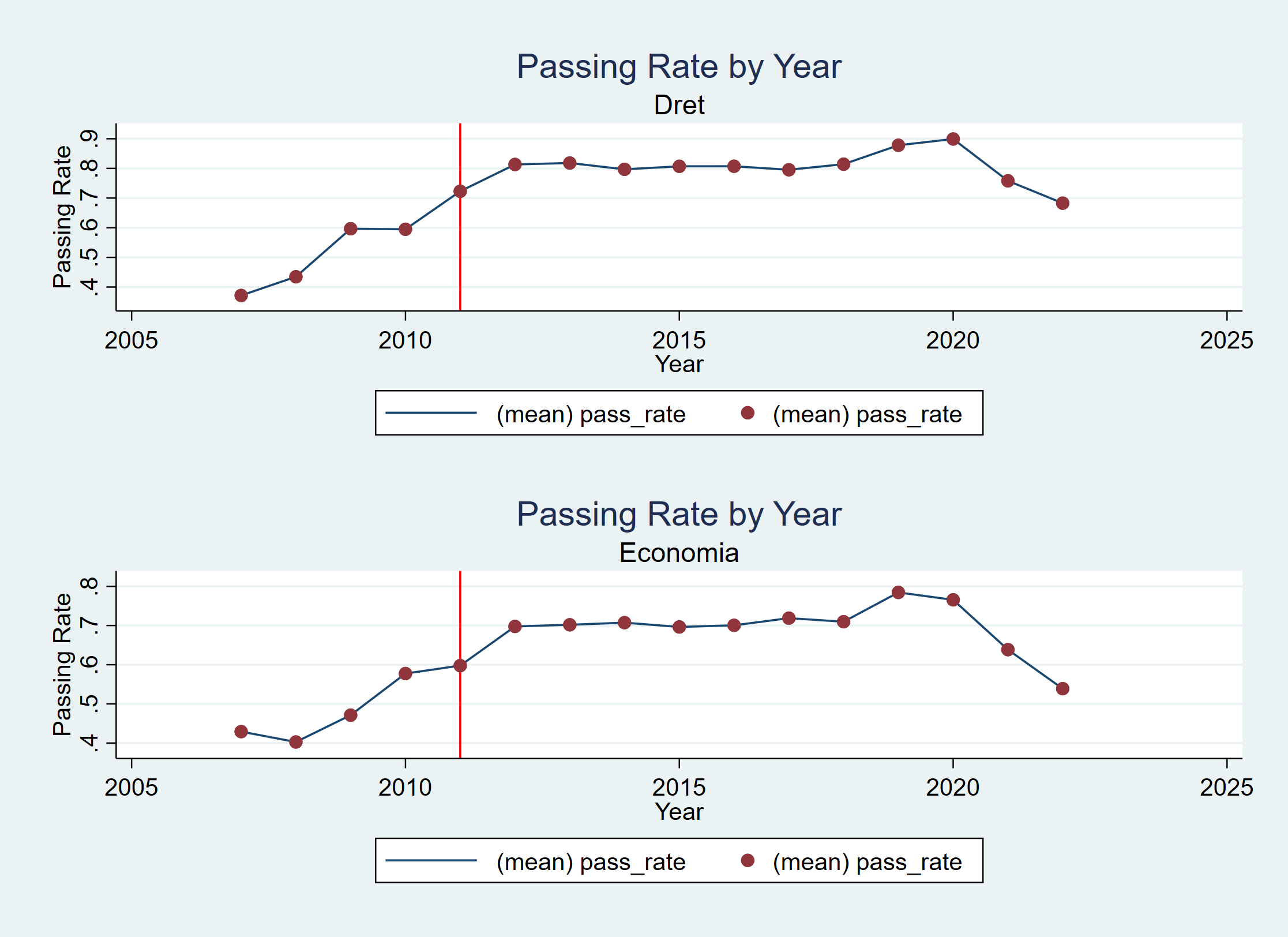
2. Absence ratio (first exam attempt)
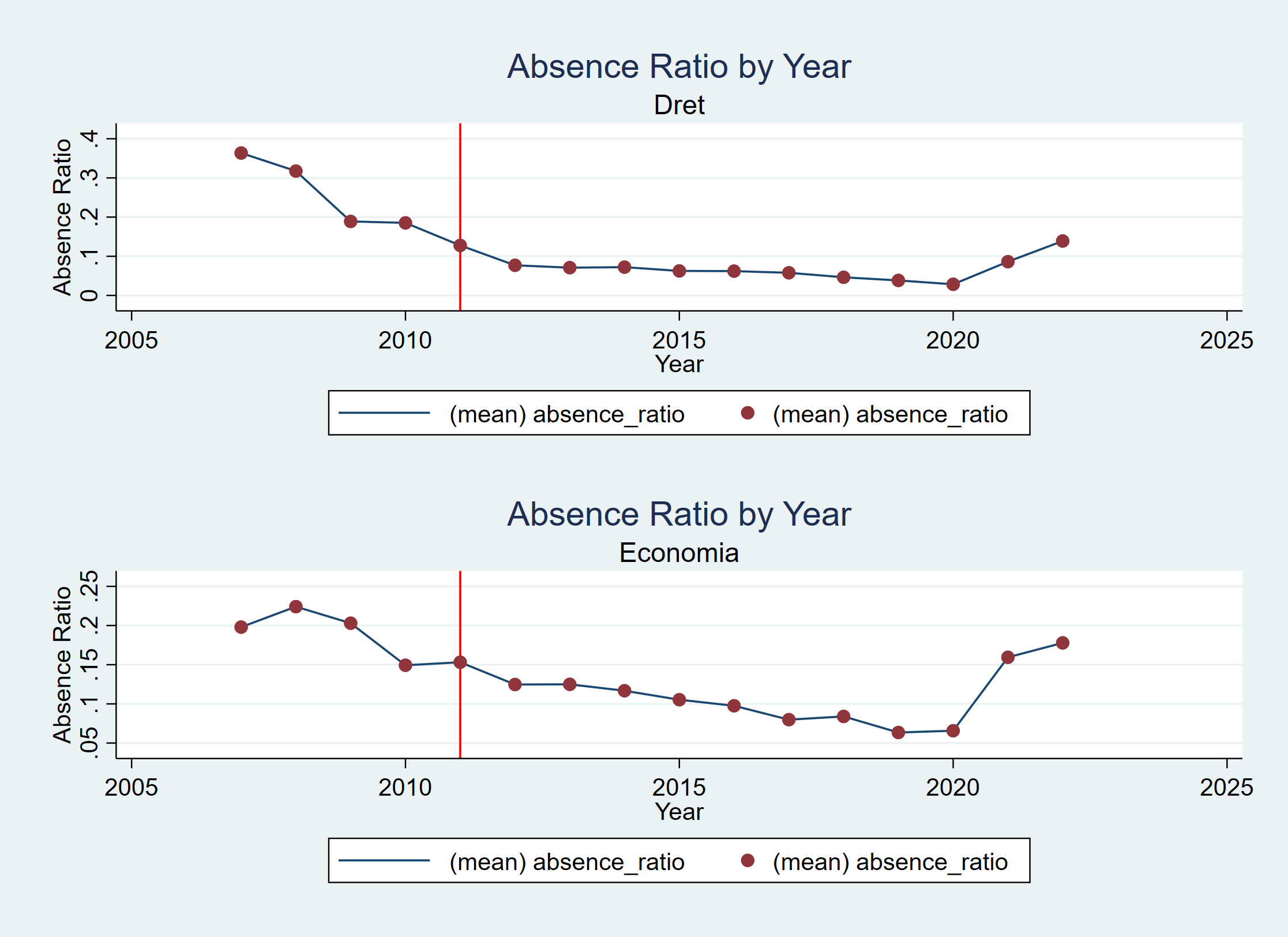
1. Average Time to Pass (including people who did not pass)
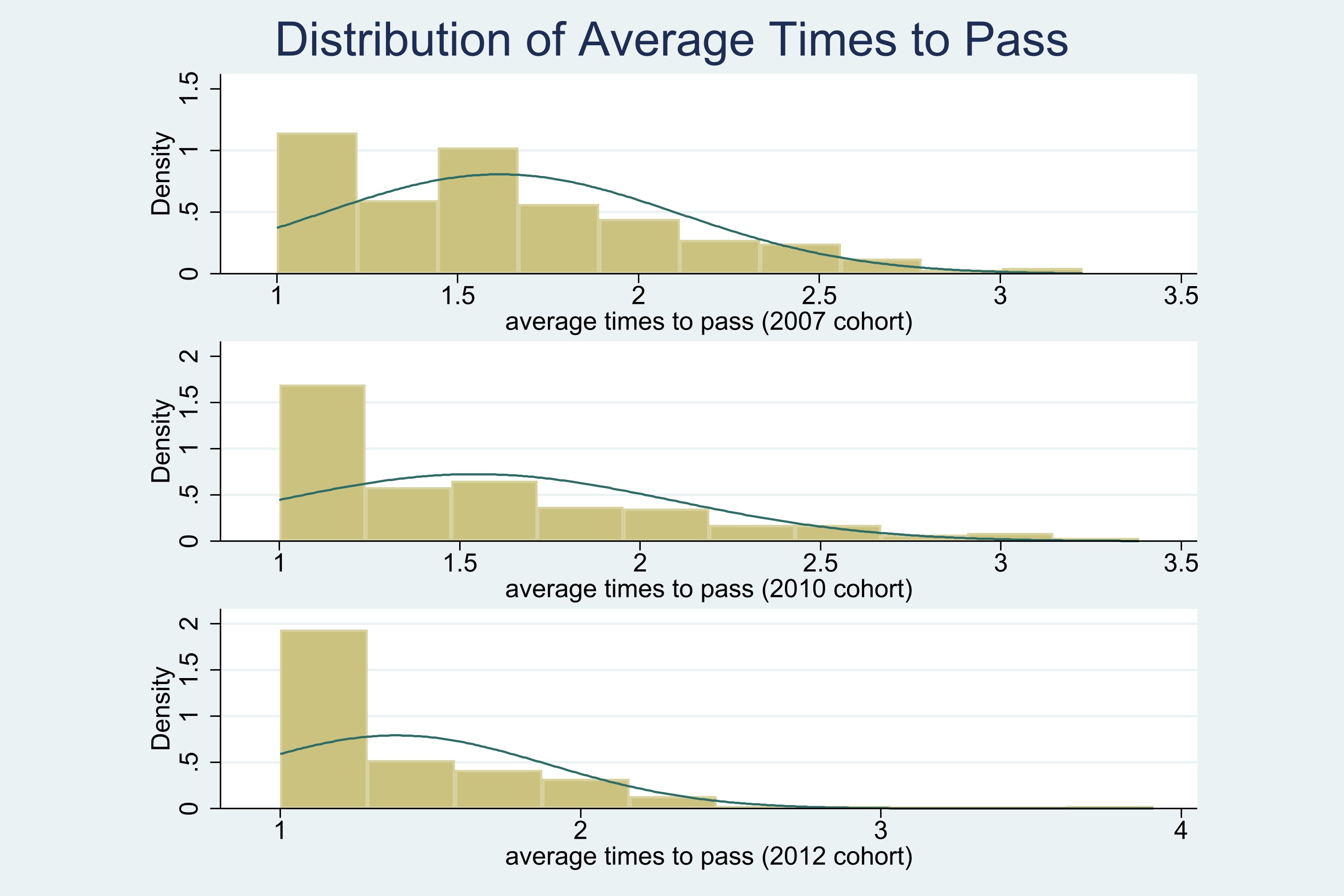
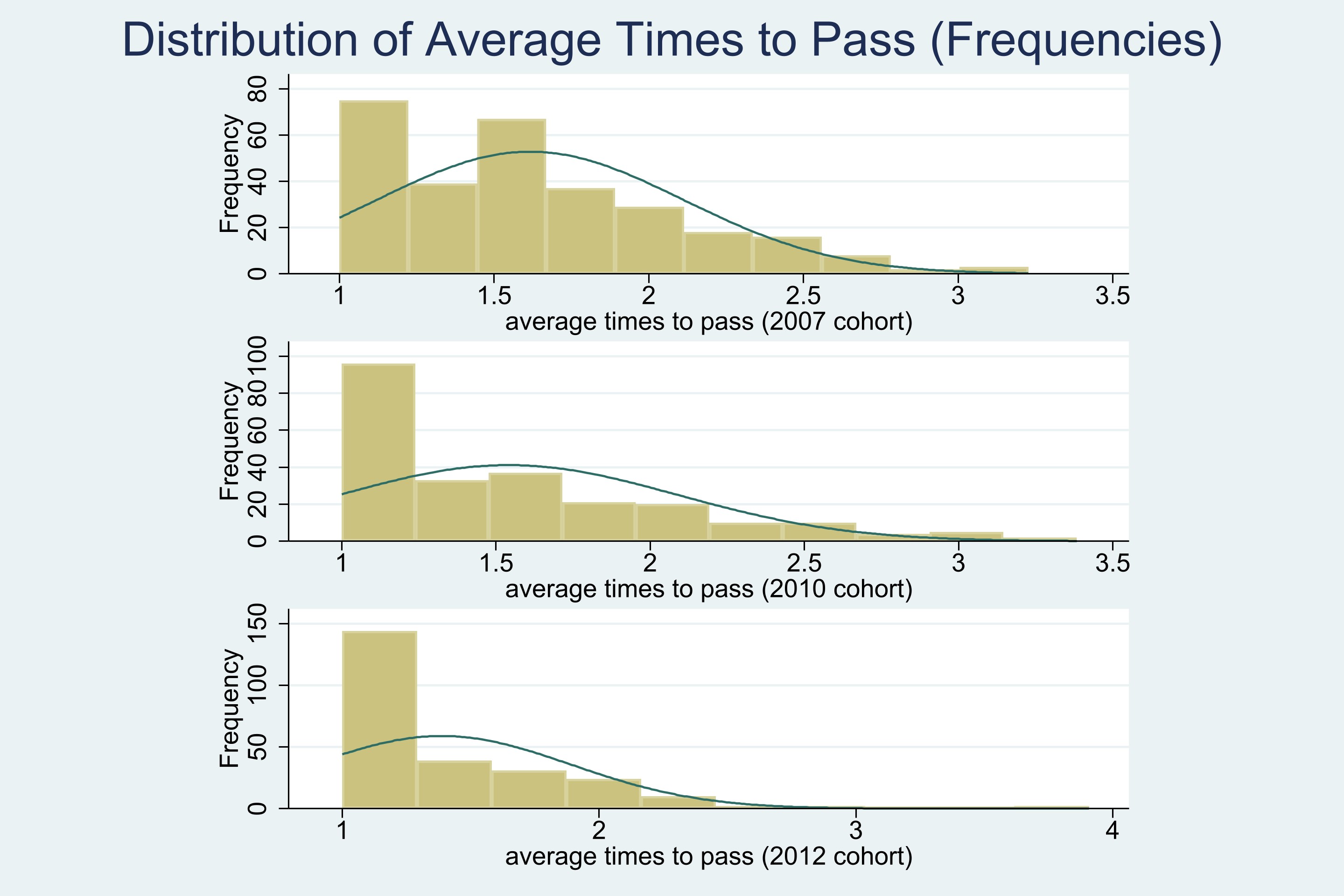
Note: density on the left and frequency on the right, same below.
Press ↓ to see following graphs.
2. Average Time to Pass by Gender
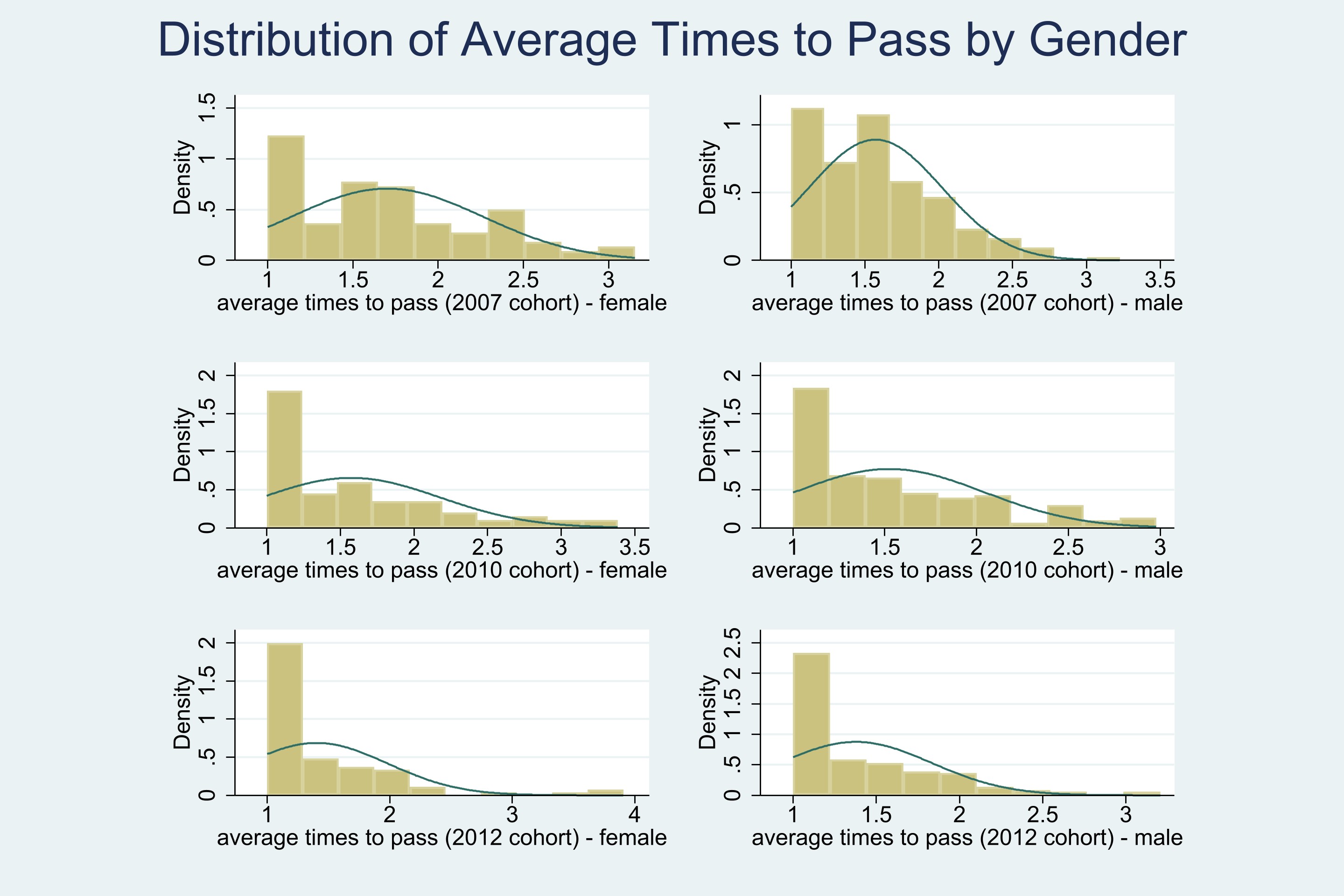
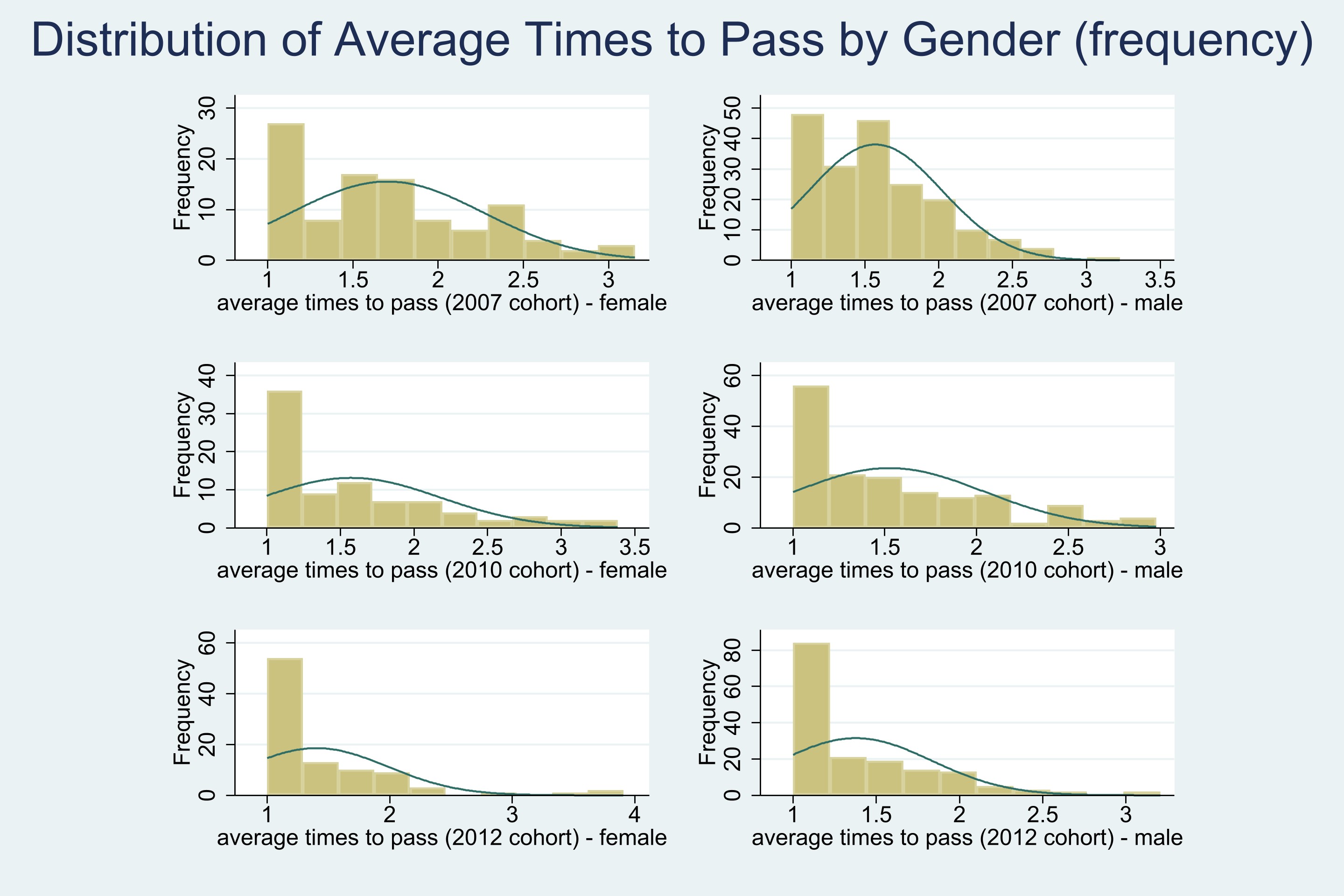
3. Average Time to Pass (First Years)
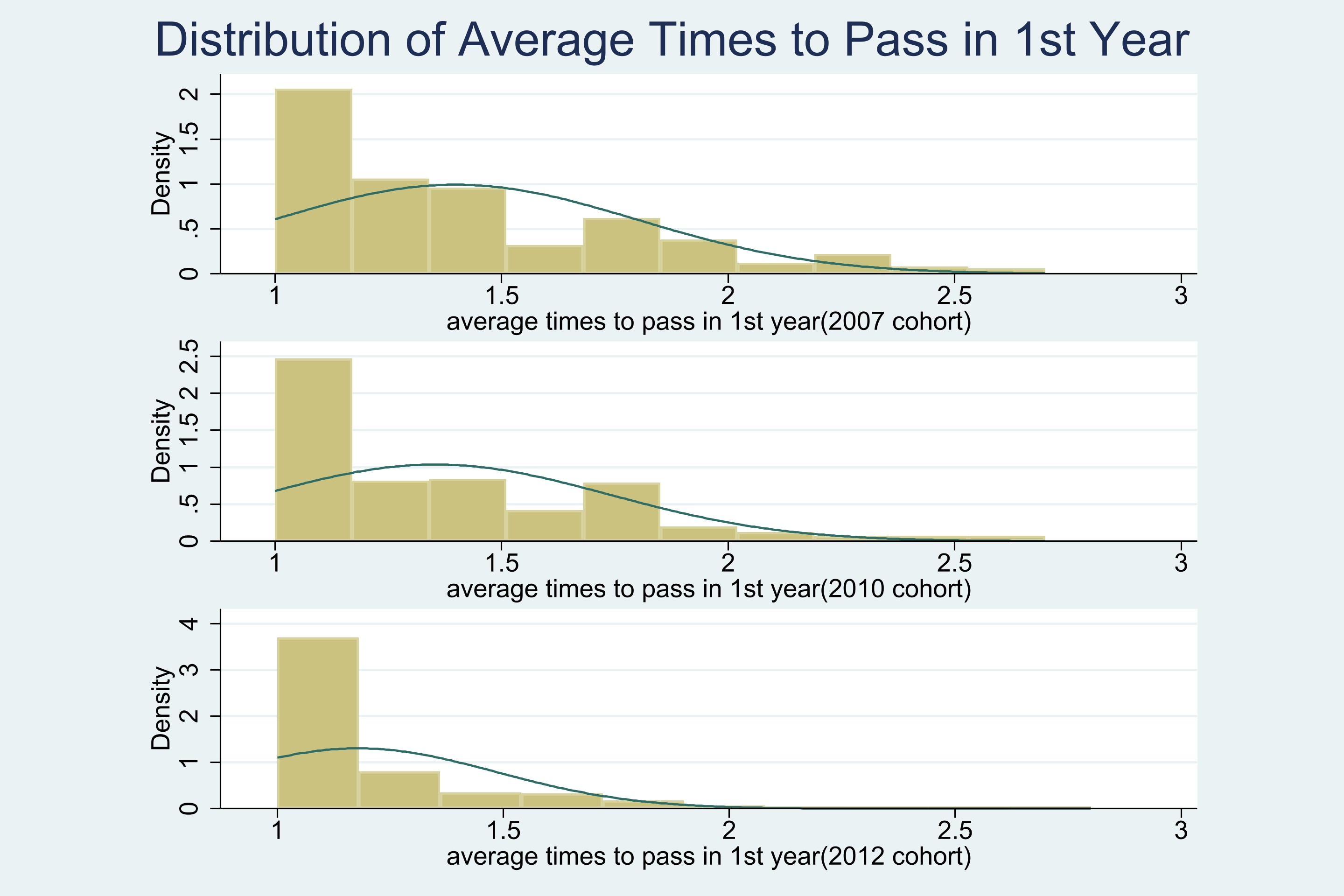
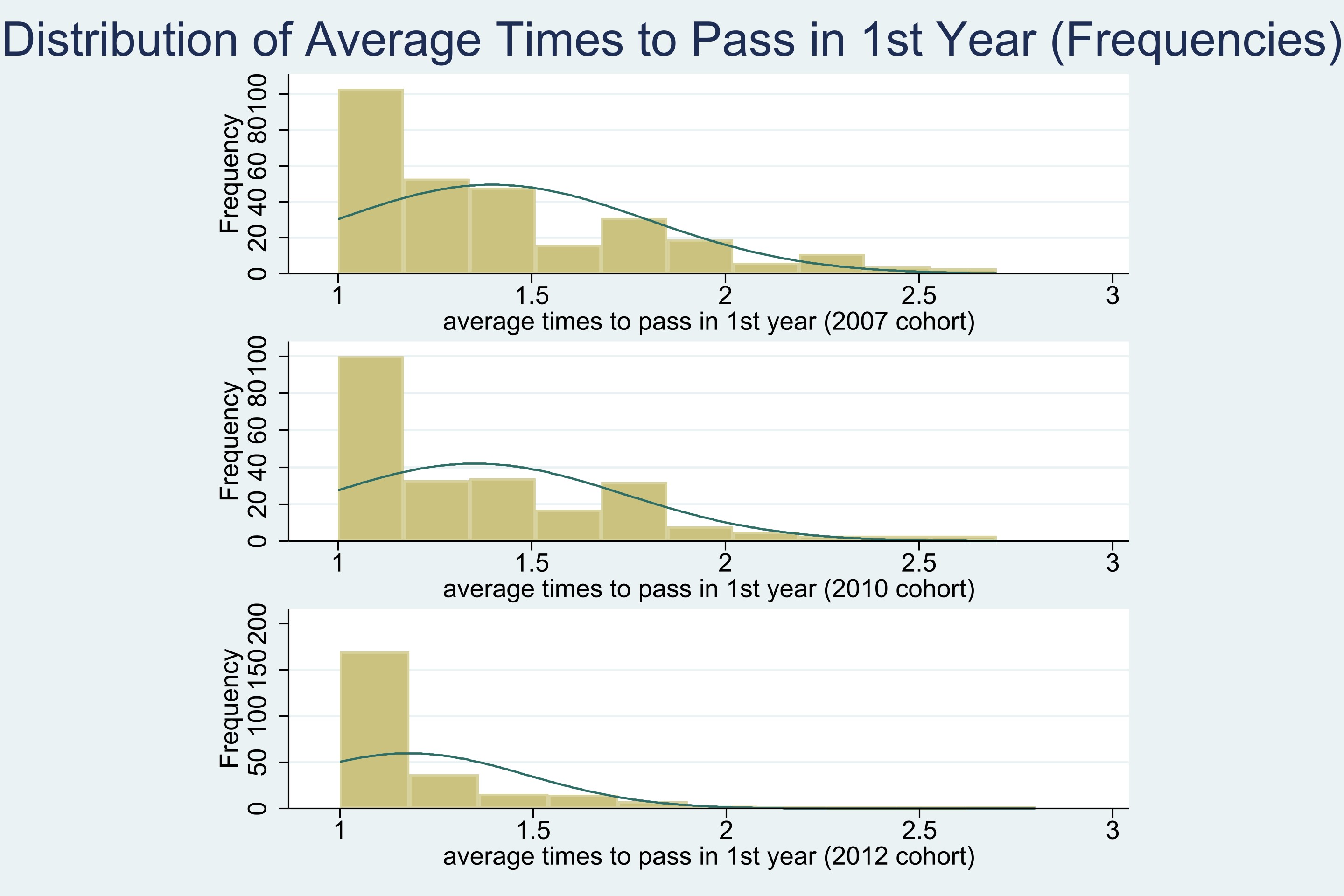
4. Number of Courses Enrolled per Student
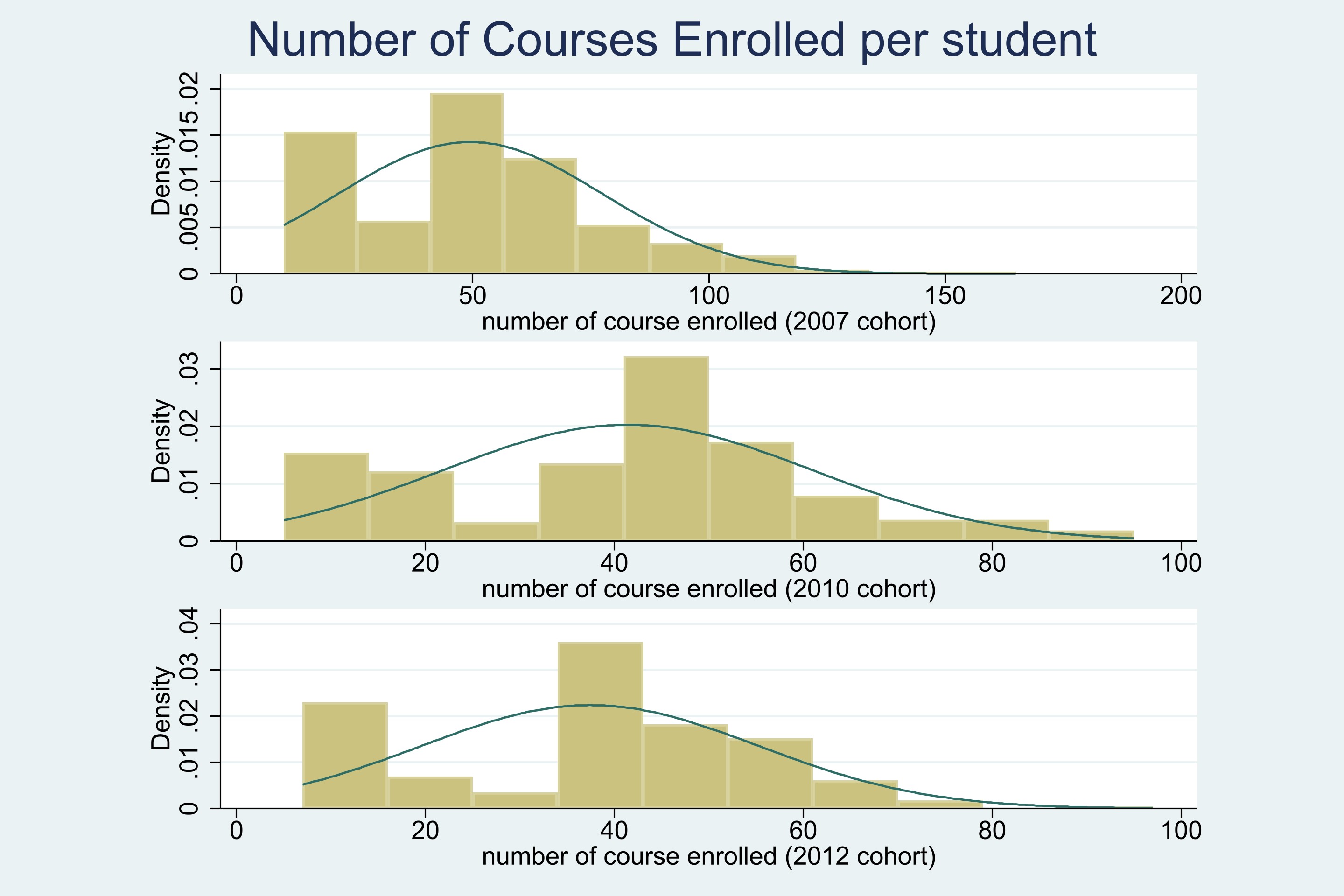
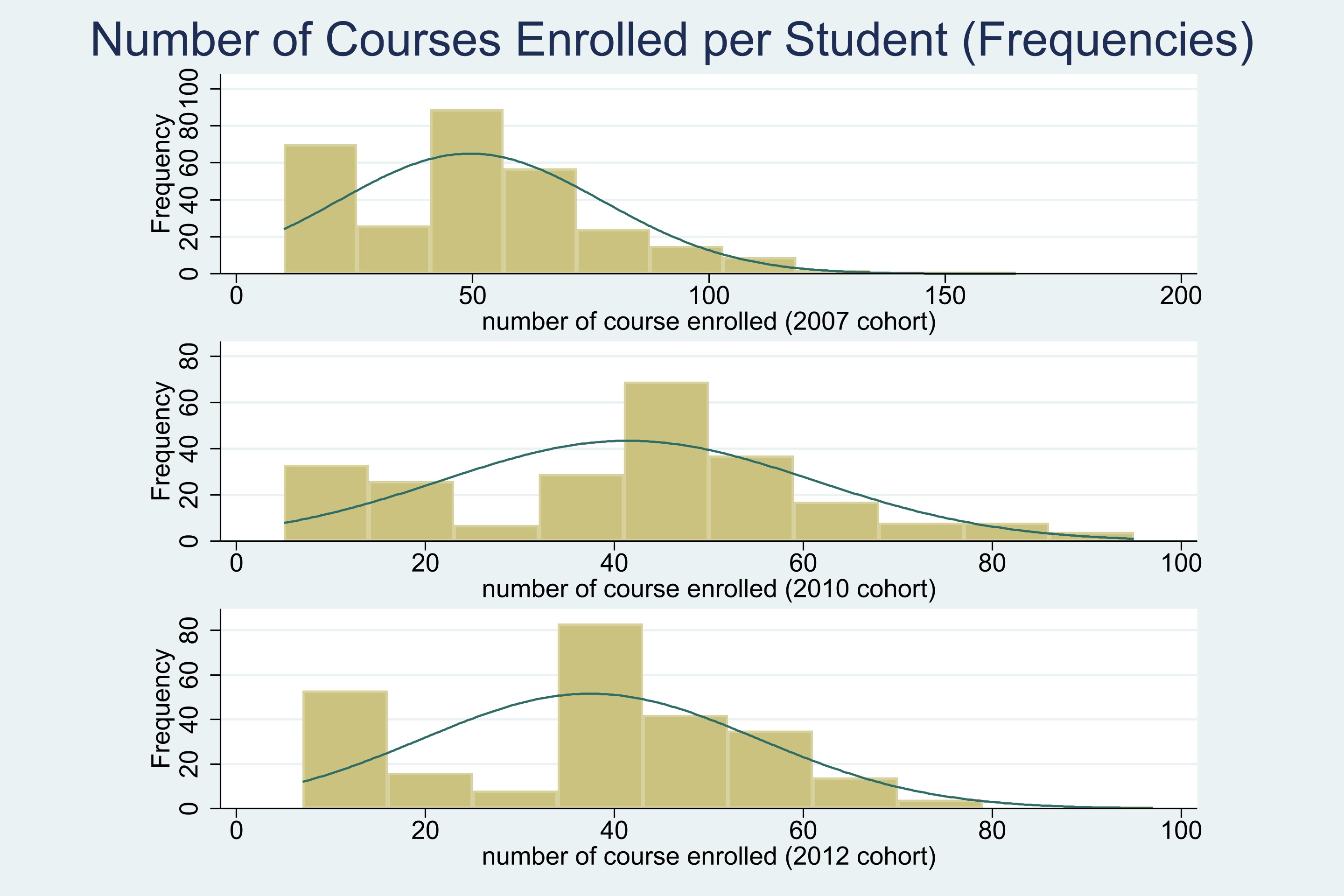
Question: the number of courses on the cirriculum changed before and after 2012?
4-1 Number of Courses Enrolled per Student (Excluding Recognitions).
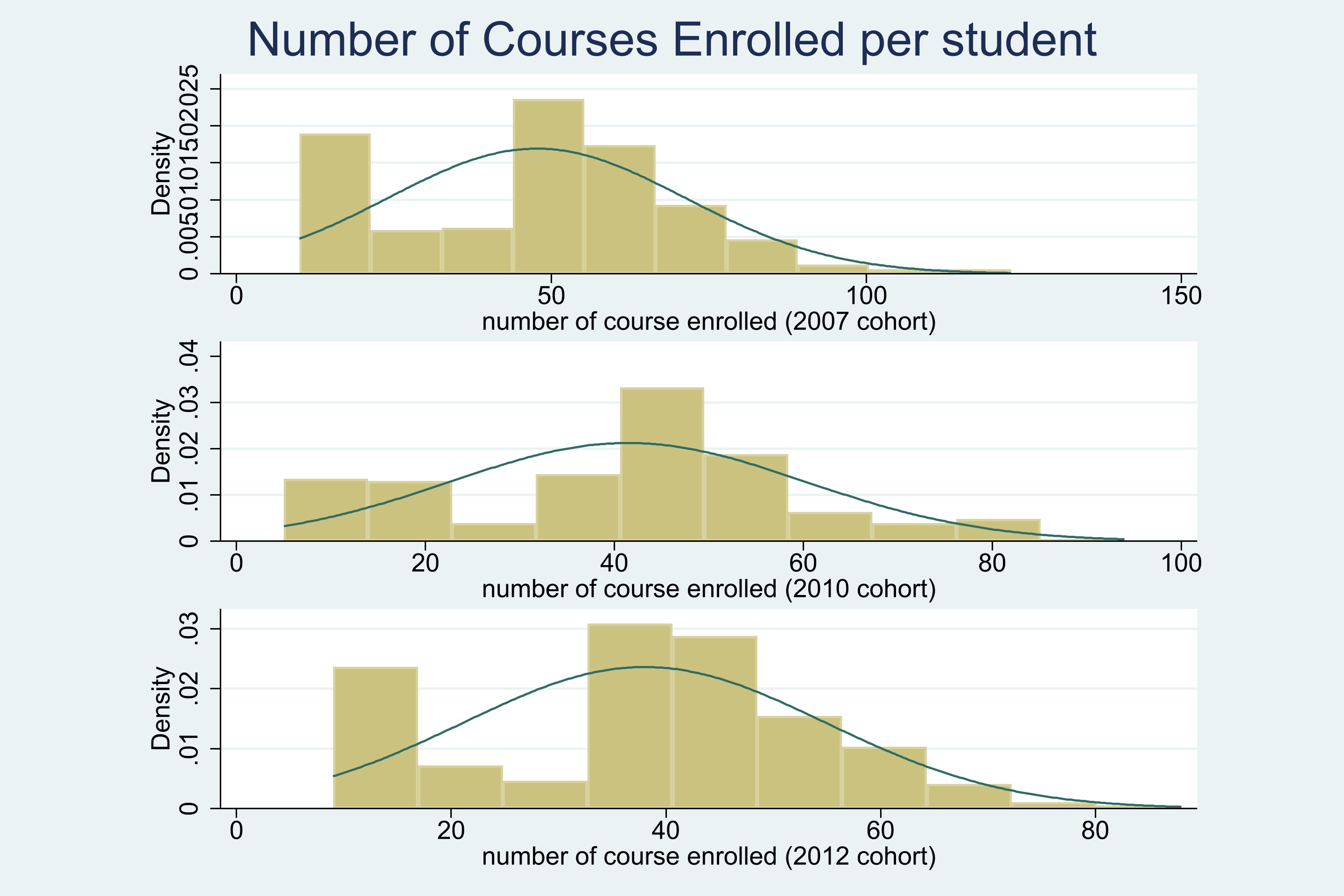
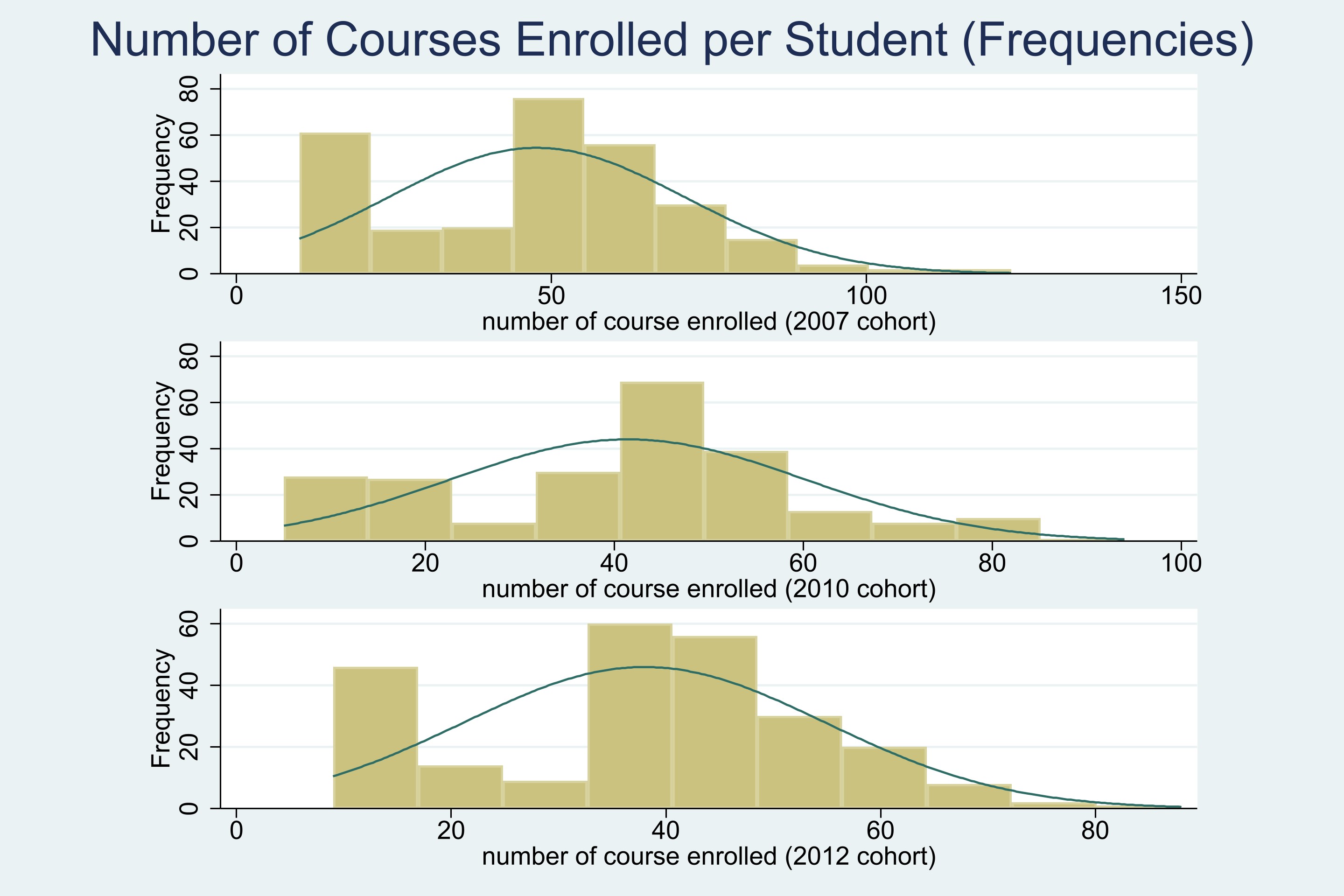
Note: Here I exclude records for the courses "taken" through credit recognition and the like, keeping only those taken in a normal sense (TIAPUN=="O" ).
4-2 Percentage of Good Grades per Student.
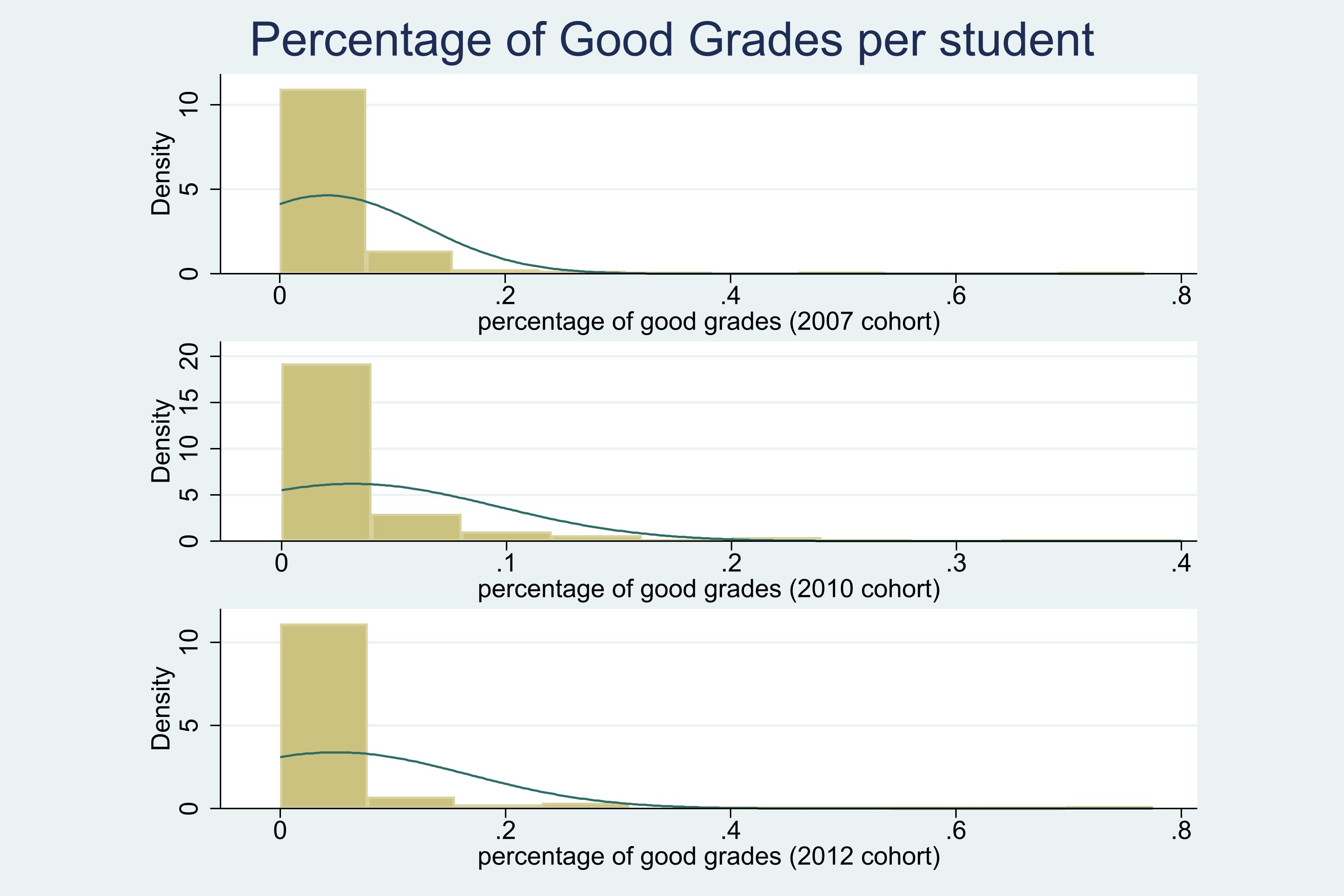
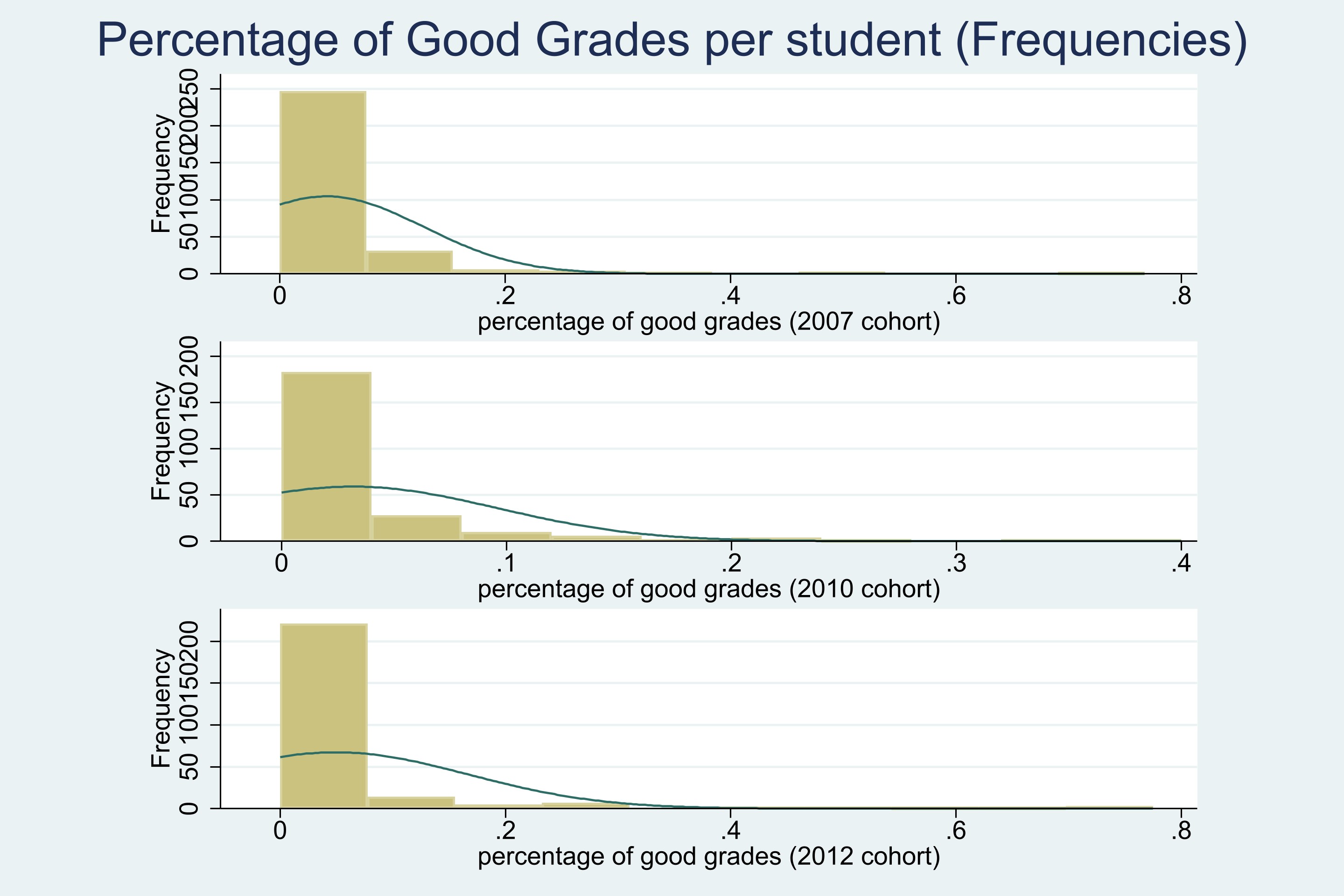
We see no systematic change across cohorts. Raising costs does not seem to motivate students to earn a better grade (or maybe there is a limit of percentage for 9+?).
Note: Here I define "good grades" as E(xcellent) and H(onorable) in the first chance taking the exam.
4-3 Percentage of Bad Performane per Student (Final Chance).
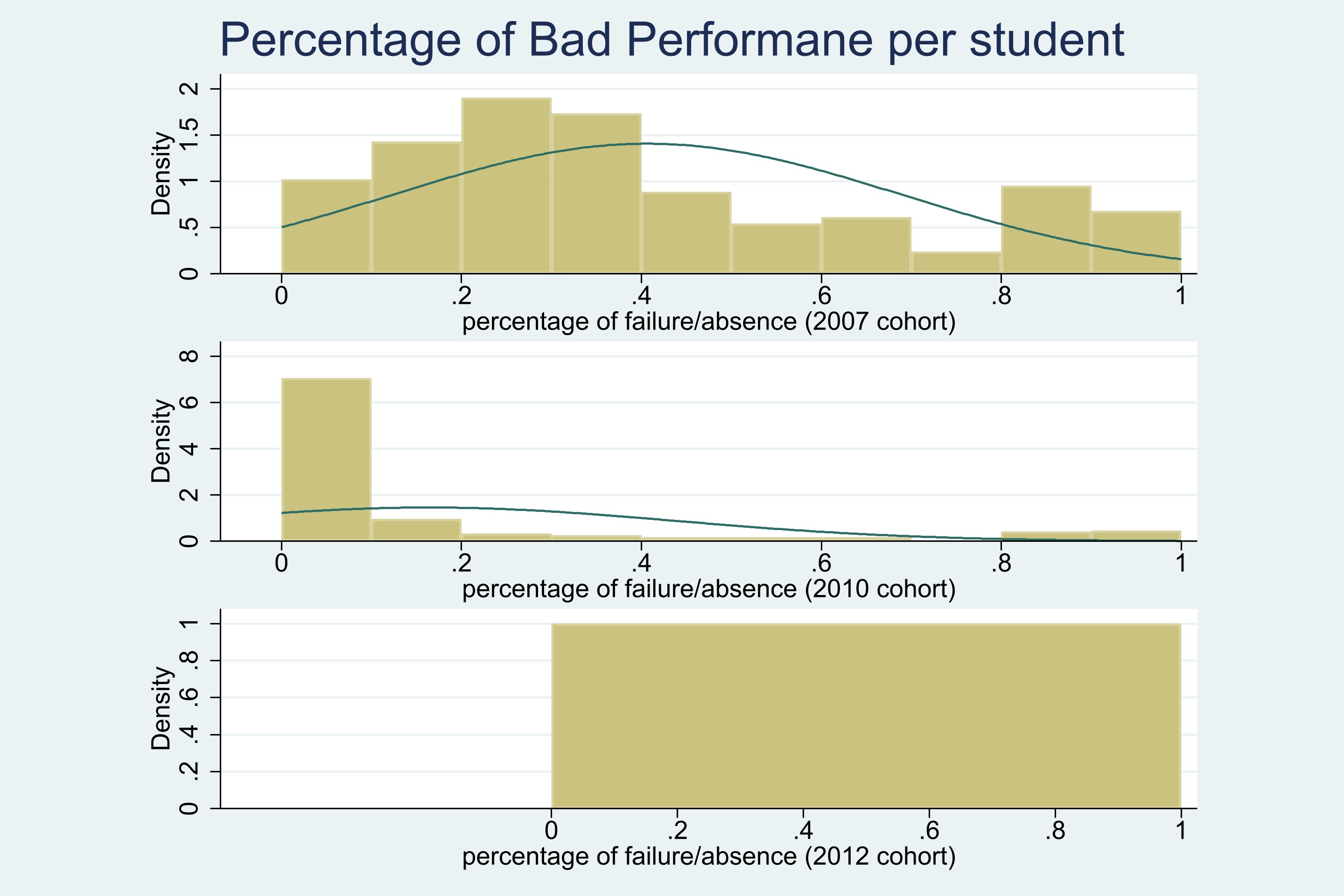
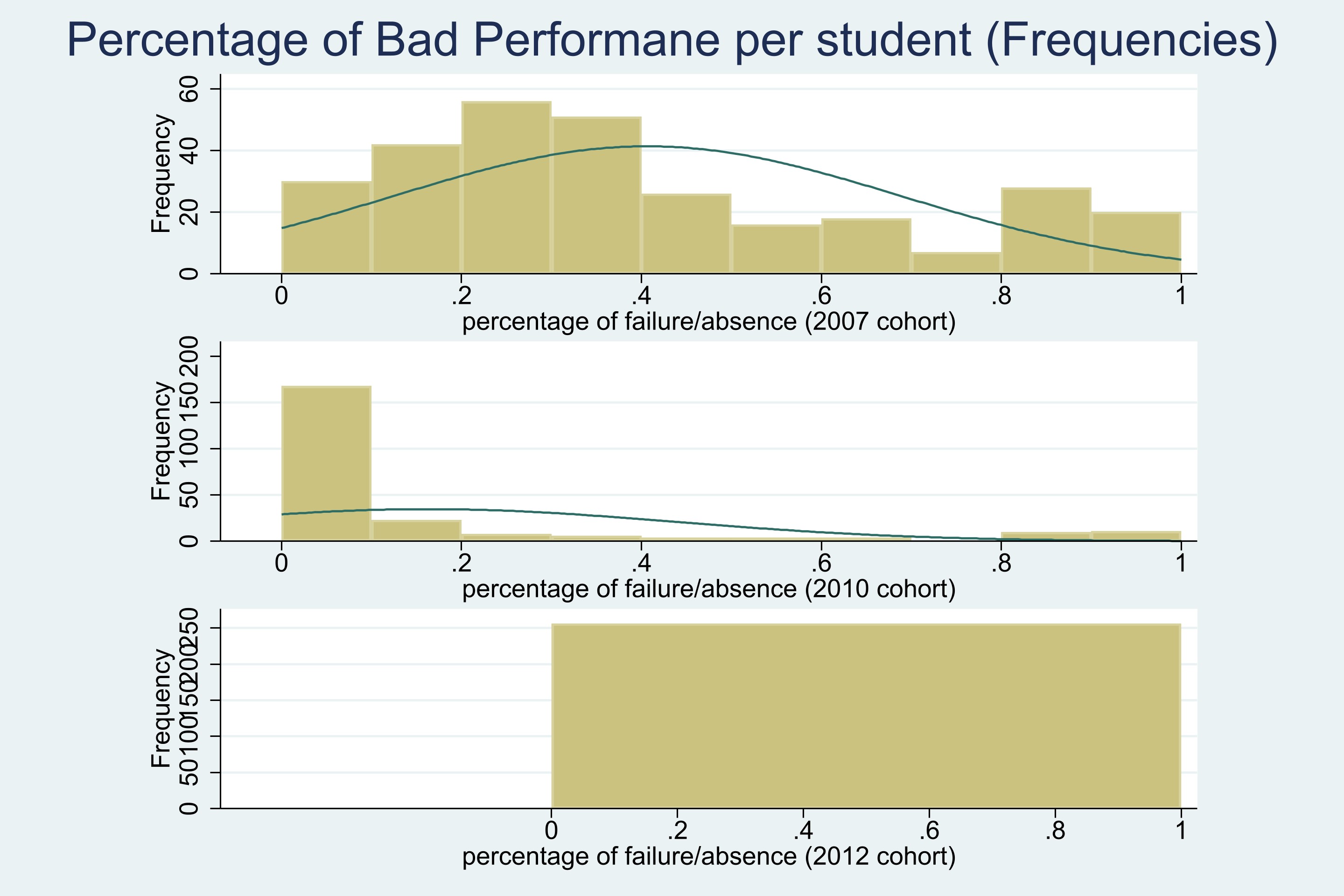
The 2010 cohort has a much lower rate of bad performance than the 2007 cohort.
Note: 1) Here I define "bad performance" as failing or not attending the second and final chance to take the exam.
2) The 2012 cohort is strange here.❗Missing all the grades for second chances. Need to check with data person.
5. Average Time to Pass by Course
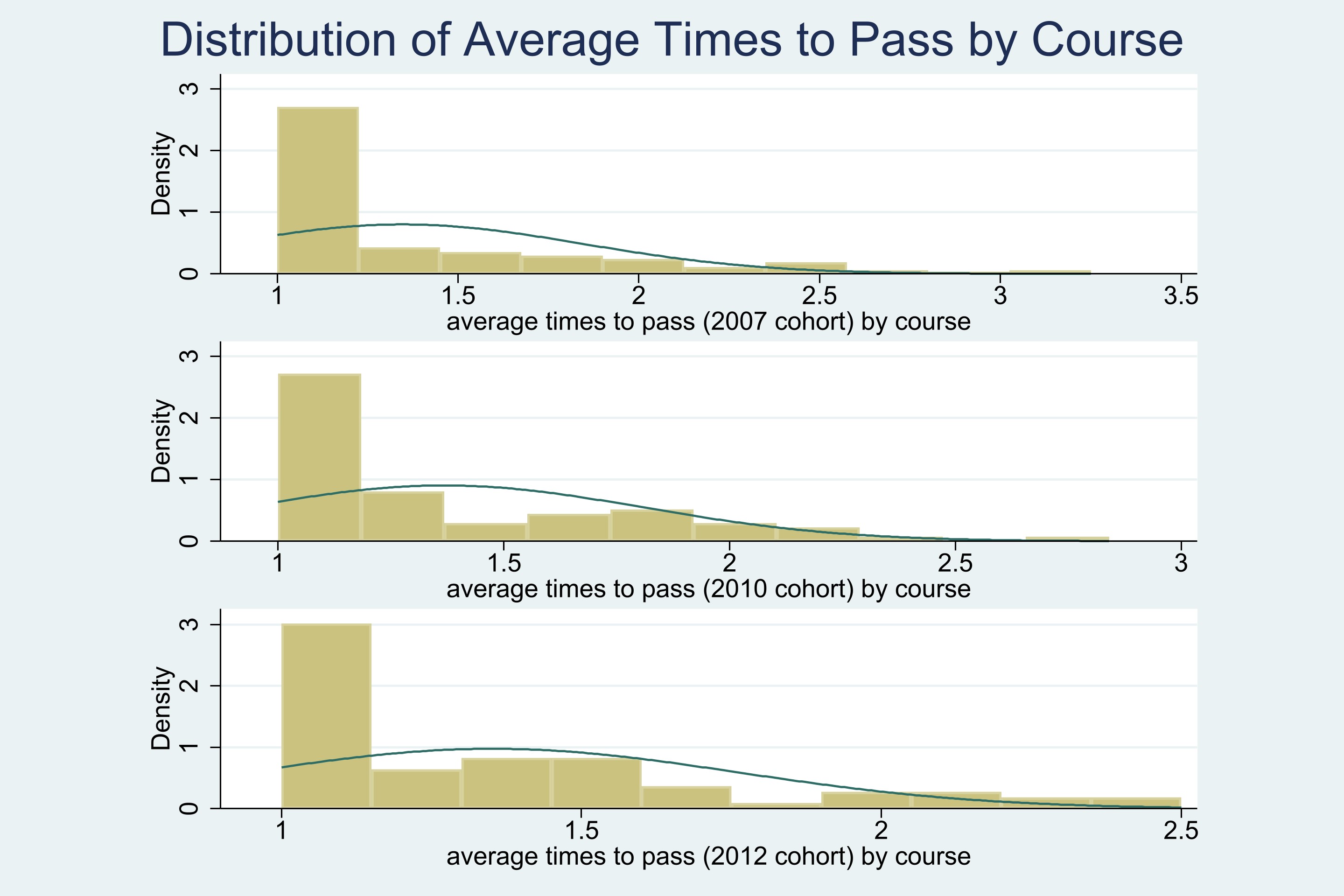
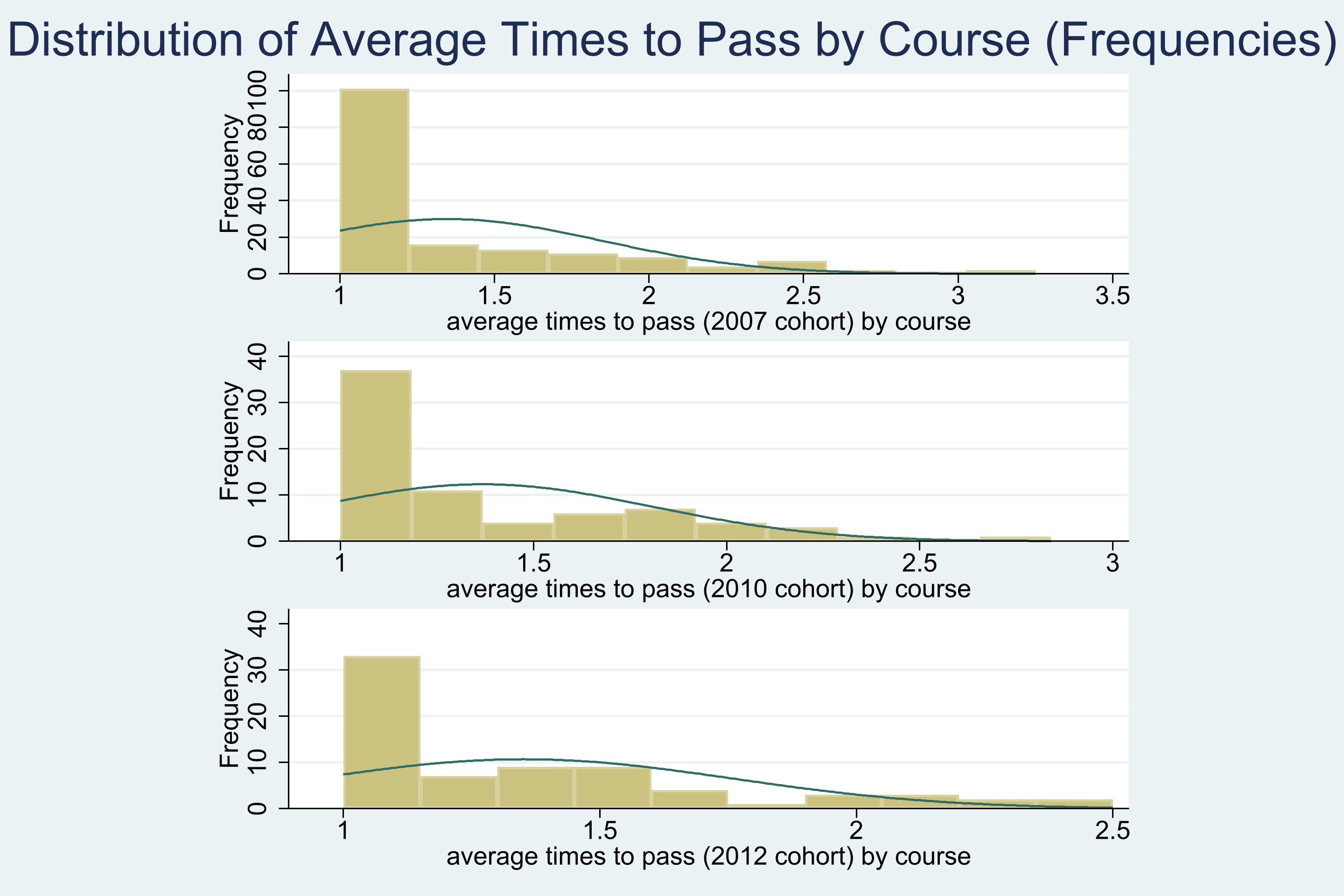
Note: Here I use course names instead of course codes to identify course. But still it is very wierd because some people took 100+ courses during their undergrad's. Maybe it's related to the transition from the 20 series to the 36 series. I'll look at it later.
6. Average Time to Pass (Compulsory vs Optional)
updated with variable TIASEN


1. Price Changes in Catalonia 2008 to 2020 - Economics (pre-Bologna system)
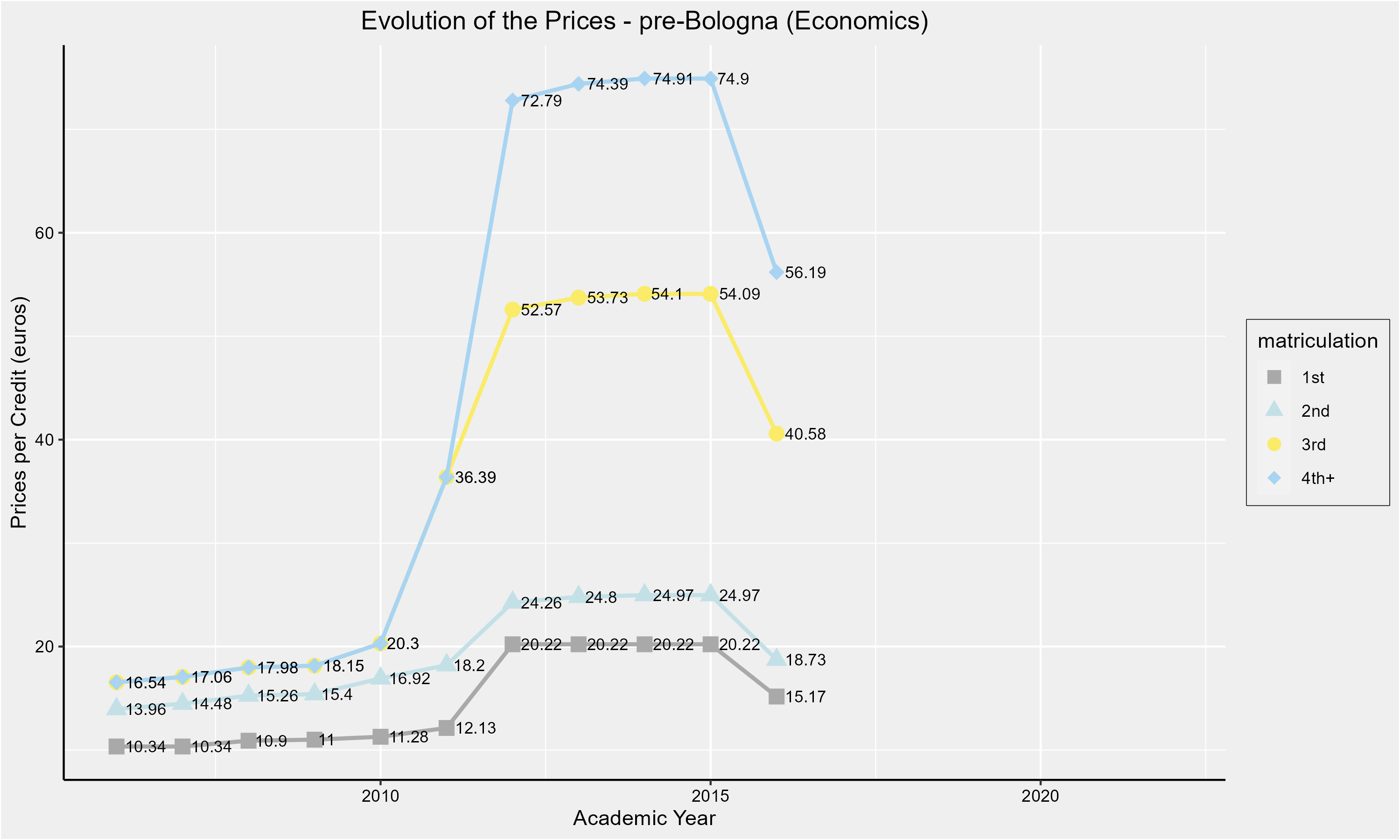
1. Price Changes in Catalonia 2008 to 2020 - Economics (Bologna system)
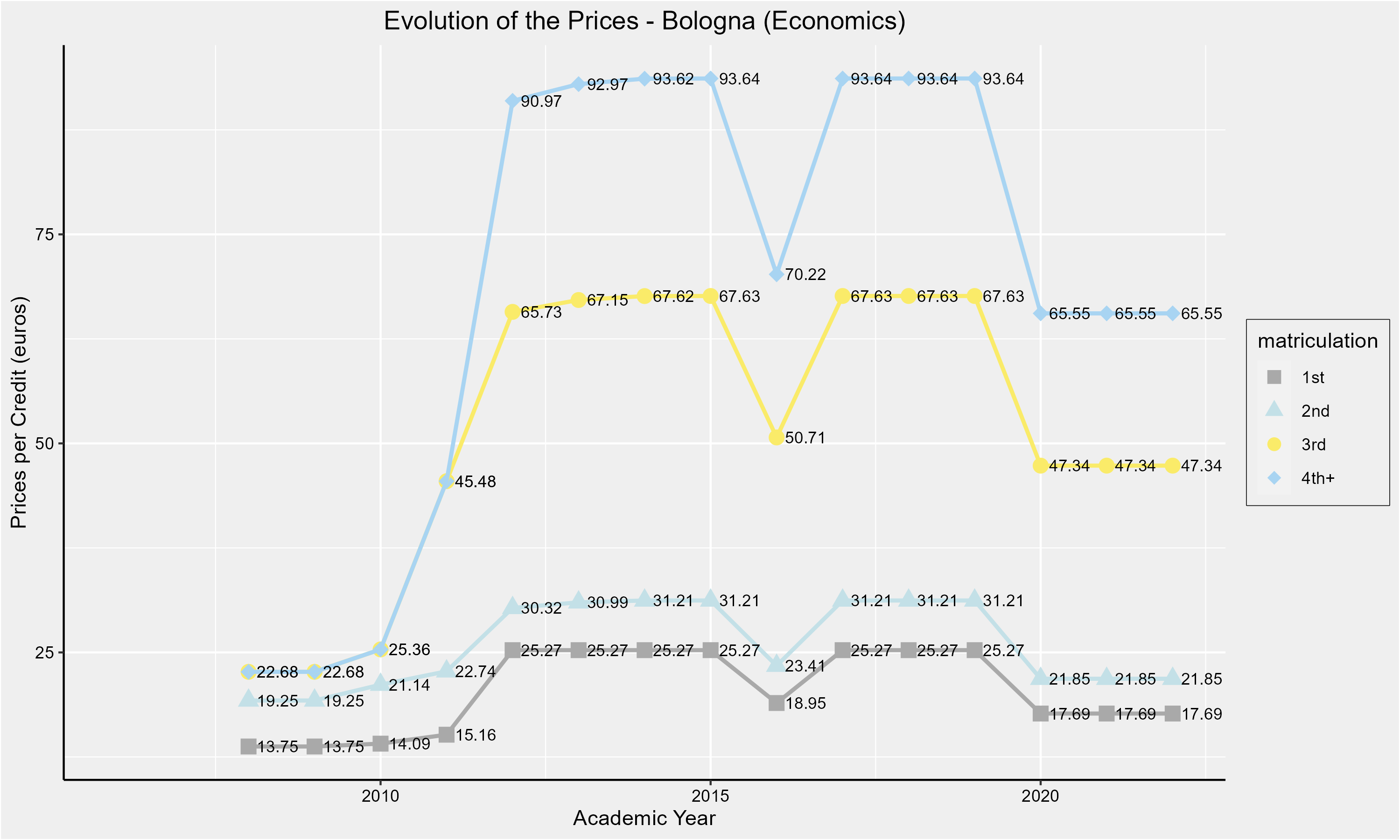
2. Price Changes in Catalonia 2008 to 2020: pre- and post-Bologna


They behave in the exact same way!
3. Price Changes in Catalonia 2008 to 2020 - Economics vs Human Biology (Bologna System)
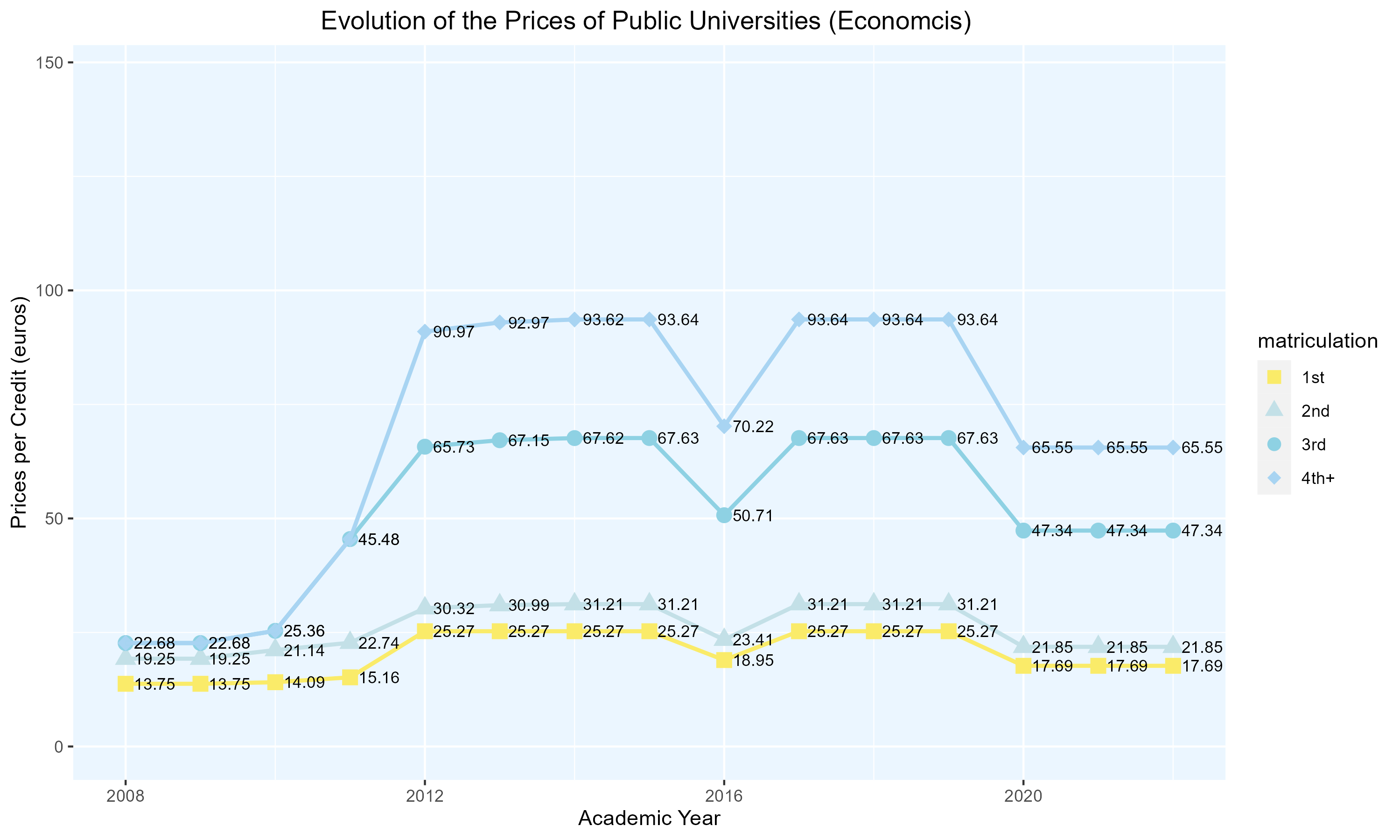
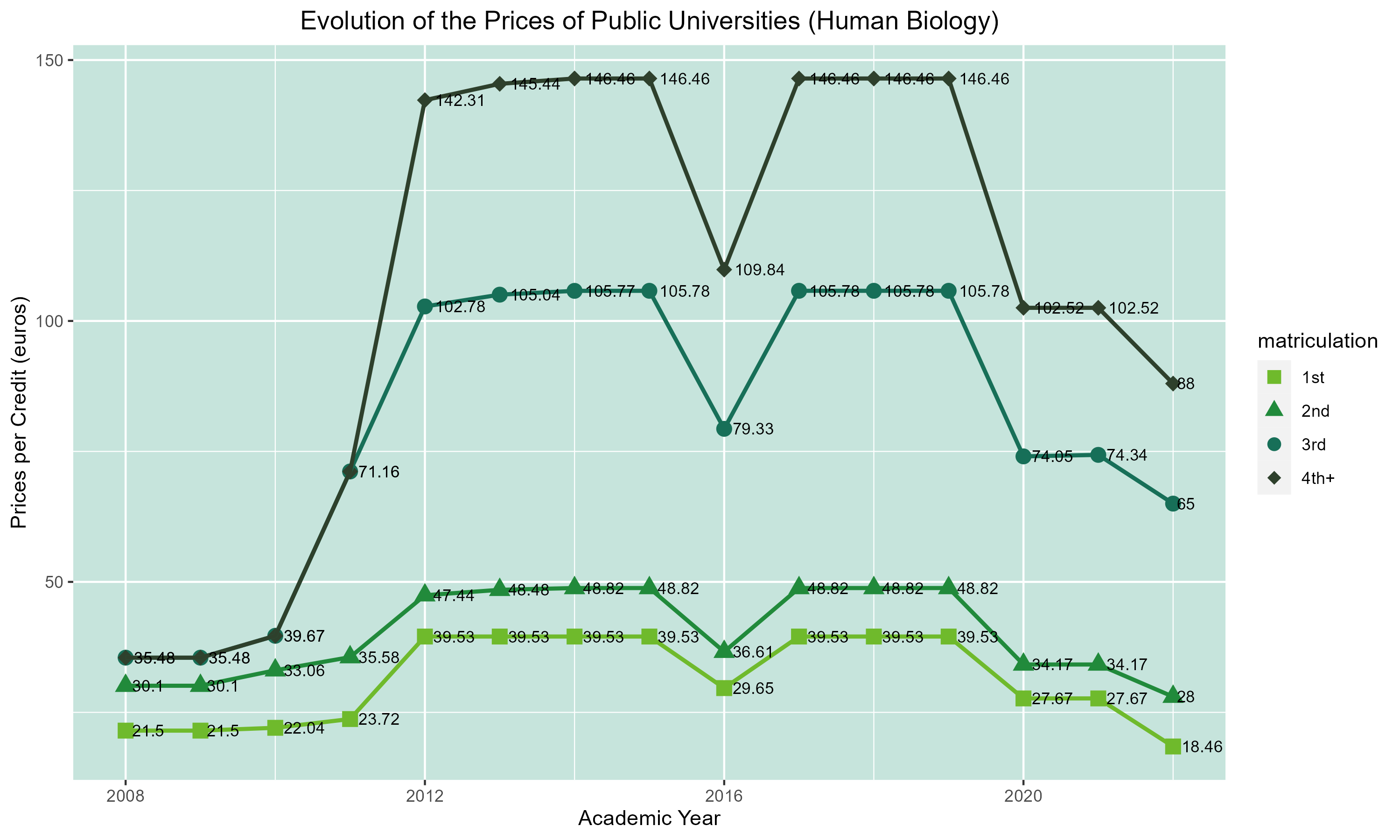
5. Number of registration (student-course).
| No. Times | 2007 Cohort | 2010 Cohort | 2012 Cohort |
|---|---|---|---|
| 1 | 6,257(74.51%) | 5,552(81.57%) | 5,552(86.48%) |
| 2 | 1,396(16.62%) | 782(12.69%) | 643(10.02%) |
| 3 | 506(6.03%) | 242(3.93%) | 164(2.55%) |
| 4 and more | 239(2.85%) | 111(1.80%) | 61(0.95%) |